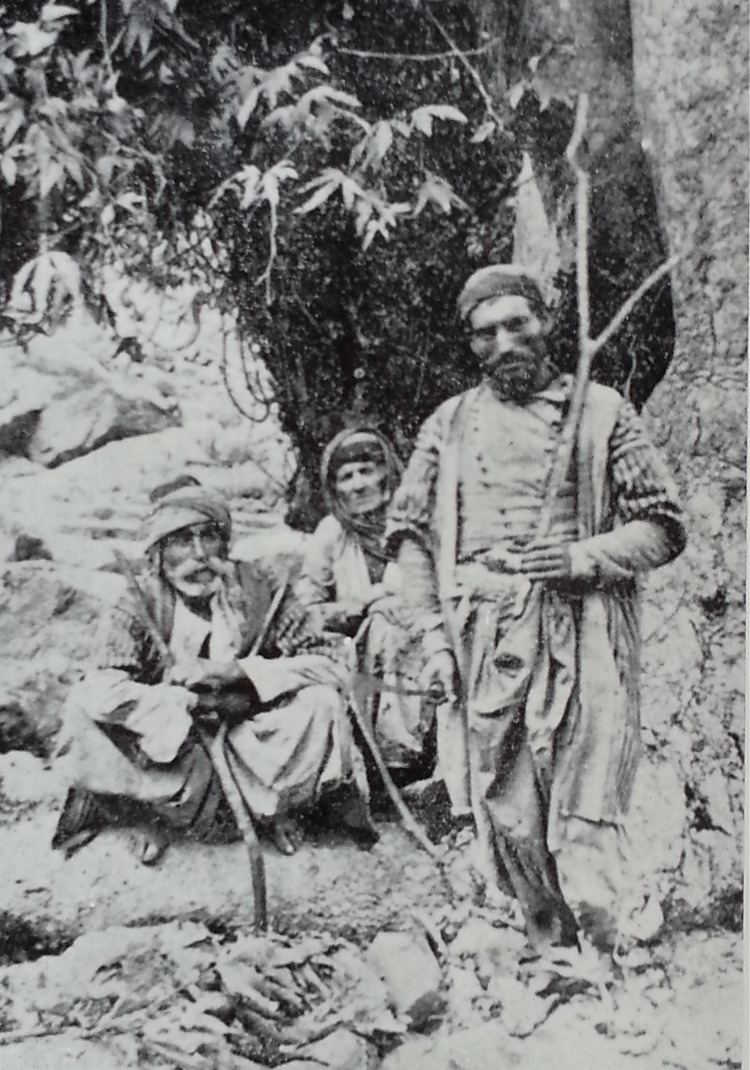1861–1918 → 1870 110,000 Capital Deir al-Qamar | Established 1861 | |
 | ||
The Mount Lebanon Mutasarrifate (Arabic: متصرفية جبل لبنان ; Turkish: Cebel-i Lübnan Mutasarrıflığı) was one of the Ottoman Empire's subdivisions following the Tanzimat reform. After 1861 there existed an autonomous Mount Lebanon with a Christian mutasarrıf, which had been created as a homeland for the Maronites under European diplomatic pressure following the 1860 massacres.
Contents
Background
As the Ottoman Empire began to decline, the administrative structure came under pressure. Following continued animosity and fighting between the Maronites and the Druze, representatives of the European powers proposed to Sultan Abdülmecid I that the Lebanon be partitioned into Christian and Druze sections. The Sublime Porte was finally compelled to relinquish its plans for the direct rule of the Lebanon, and on December 7, 1842, the sultan adopted prince Metternich's proposal and asked Assad Pasha, the governor (wali) of Beirut, to divide the Mount Lebanon, into two districts: a northern district under a Christian Kaymakam and a southern district under a Druze Kaymakam, both chosen among tribal leaders. Both officials were to report to the governor of Sidon, who resided in Beirut.
1860 civil war
On May 22, 1860, a small group of Maronites fired on a group of Druze at the entrance to Beirut, killing one and wounding two. This sparked a torrent of violence which swept through Lebanon. In a mere three days, from May 29 to 31, 60 villages were destroyed in the vicinity of Beirut. 33 Christians and 48 Druze were killed. By June the disturbances had spread to the “mixed” neighborhoods of southern Lebanon and the Anti Lebanon, to Sidon, Hasbaya, Rashaya, Deir el Qamar, and Zahlé. The Druze peasants laid siege to Catholic monasteries and missions, burnt them, and killed the monks. France intervened on behalf of the local Christian population and Britain on behalf of the Druze after the massacres, in which over 10,000 Christians were killed.
Creation of the Mutasarrifate
On 5 September 1860, an international commission composed of France, Britain, Austria, Prussia, Russia and the Ottoman Empire met to investigate the causes of the events of 1860 and to recommend a new administrative and judicial system for Lebanon that would prevent the recurrence of such events. In the 1861 "Règlement Organique", Mount Lebanon was preliminarily separated from Syria and reunited under a non-Lebanese Christian mutasarrıf (governor) appointed by the Ottoman sultan, with the approval of the European powers. Mount Lebanon became a semi-autonomous mutasarrifate. In September 1864, the statute became permanent. The mutasarrıf was to be assisted by an administrative council of twelve members from the various religious communities in Lebanon. Each of the six religious groups inhabiting the Lebanon (Maronites, Druzes, Sunni, Shi’a, Greek Orthodox and Melkite) elected two members to the council.
This Mutasarrifate system lasted from 1861 until 1918, although it was de facto abolished by Djemal Pasha (one of the "Three Pashas" of the World War I-era Ottoman leadership) in 1915, after which he appointed his own governors.
Naming
The members of the international commission researched many names for the new administrative division and its governor. Many titles were considered; Emir (أمير) was quickly refuted because it was offensive to the Ottoman Porte (Emir being a title of the Ottoman Sultan) and was reminiscent of the Emirate system that the Ottomans fought to abolish. Vali (والي) also fell from consideration because the commission members wanted to convey the importance of the rank of the new title which was above than to that of the Ottoman governors of nearby vilayets; "Governor" (حاكم) was also abandoned because they thought the title was commonplace and widespread. The commission members also ruminated over the title of "President" (رئيس جمهورية) but the designation was not approved by the Ottoman government. After two weeks of deliberation, the French term plénipotentiaire was agreed upon and its Turkish translation mutasarrıf was adopted as the new title for the governor and for the division, which was dubbed in Arabic as the mutasarrifiyah of Mount Lebanon.
List of mutasarrıfs
Eight mutasarrıfs were appointed and ruled according to the basic mutasarrifate regulation that was issued in 1861 then modified by the 1864 reform. These were:
The mnemonic word "DaFRuWNaMYO" (in Arabic, دفرونميا) helped school children memorize the name of the mutasarrıfs.
List of Governors
When the First World War broke out in 1914, Djemal Pasha occupied Mount Lebanon militarily and revoked the mutasarrifate system. He appointed the mutasarrıfs during this period. Those governors were:
Demographics
The total population in 1895 was estimated as 399,530, with 80,234 (20.1%) Muslims and 319,296 (79.9%) Christians. In 1913, the total population was estimated as 414,747, with 85,232 (20.6%) Muslims and 329,482 (79.4%) Christians.
1895 and 1913 censuses
Source:
